Ford Puma vs Subaru Forester – Differences & prices compared
Everyday use, family trips or long-distance drives – here’s where the differences show.
Discover whether Ford Puma or Subaru Forester fits your lifestyle better.
Costs and Efficiency:
Price and efficiency are key factors when choosing a car – and this is often where the real differences emerge.
Ford Puma has a decisively advantage in terms of price – it starts at 24800 £, while the Subaru Forester costs 34700 £. That’s a price difference of around 9934 £.
Fuel consumption also shows a difference: Ford Puma manages with 5.40 L and is therefore decisively more efficient than the Subaru Forester with 8.10 L. The difference is about 2.70 L per 100 km.
Engine and Performance:
Power, torque and acceleration are the classic benchmarks for car enthusiasts – and here, some clear differences start to show.
When it comes to engine power, the Ford Puma has a somewhat edge – offering 168 HP compared to 136 HP. That’s roughly 32 HP more horsepower.
In acceleration from 0 to 100 km/h, the Ford Puma is decisively quicker – completing the sprint in 7.40 s, while the Subaru Forester takes 12.20 s. That’s about 4.80 s faster.
In terms of top speed, the Ford Puma performs somewhat better – reaching 210 km/h, while the Subaru Forester tops out at 188 km/h. The difference is around 22 km/h.
There’s also a difference in torque: Ford Puma pulls noticeable stronger with 290 Nm compared to 182 Nm. That’s about 108 Nm difference.
Space and Everyday Use:
Cabin size, boot volume and payload all play a role in everyday practicality. Here, comfort and flexibility make the difference.
Both vehicles offer seating for 5 people.
In curb weight, Ford Puma is distinct lighter – 1316 kg compared to 1693 kg. The difference is around 377 kg.
In terms of boot space, the Ford Puma offers slight more room – 523 L compared to 508 L. That’s a difference of about 15 L.
In maximum load capacity, the Subaru Forester performs noticeable better – up to 1731 L, which is about 448 L more than the Ford Puma.
When it comes to payload, Subaru Forester slight takes the win – 492 kg compared to 469 kg. That’s a difference of about 23 kg.
Who wins the race?
The Ford Puma proves to be outperforms in nearly all aspects and therefore becomes our DriveDuel Champion!
Ford Puma is the better all-rounder in this comparison.

Ford Puma
Ford Puma
The Ford Puma presents itself as a stylish compact SUV with a distinctive design that combines practicality with a dynamic driving experience. Its sleek lines and sporty aesthetics make it stand out on the road, while the interior offers a comfortable and tech-savvy environment. With an emphasis on efficiency and a smooth drive, the Ford Puma is well-suited for both urban commutes and countryside adventures.
details @ puma.fordpresskits.com
@ puma.fordpresskits.com
 @ puma.fordpresskits.com
@ puma.fordpresskits.com
 @ puma.fordpresskits.com
@ puma.fordpresskits.com
 @ puma.fordpresskits.com
@ puma.fordpresskits.com
Subaru Forester
The Subaru Forester is a versatile SUV known for its impressive off-road capabilities and practical design. With a spacious interior and advanced safety features, it offers comfort and security for both city driving and outdoor adventures. Its reliable performance and all-wheel-drive system make it a popular choice among those who appreciate a combination of functionality and rugged charm.
details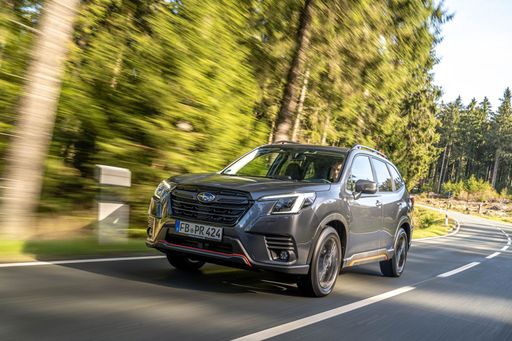 @ Subaru
@ Subaru
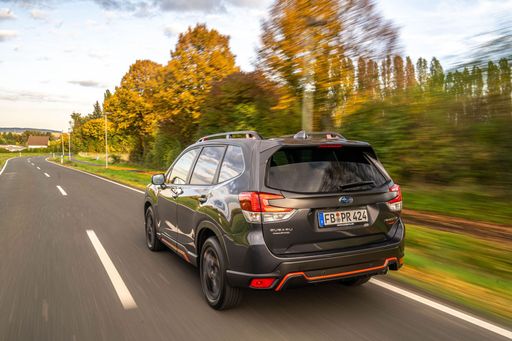 @ Subaru
@ Subaru
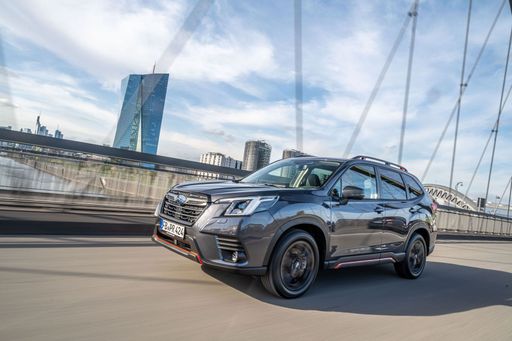 @ Subaru
@ Subaru
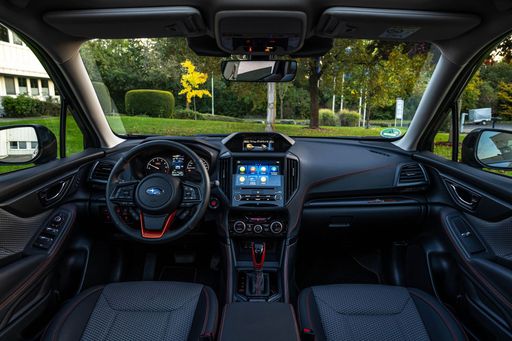 @ Subaru
@ Subaru
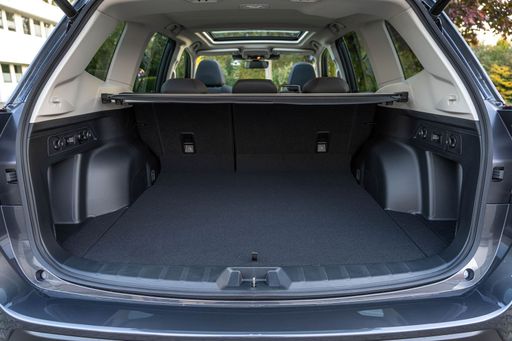 @ Subaru
@ Subaru

|

|
|
|
|
Costs and Consumption |
|
|---|---|
|
Price
24800 - 36300 £
|
Price
34700 - 42200 £
|
|
Consumption L/100km
5.4 - 5.9 L
|
Consumption L/100km
8.10 L
|
|
Consumption kWh/100km
13.1 - 13.9 kWh
|
Consumption kWh/100km
-
|
|
Electric Range
361 - 376 km
|
Electric Range
-
|
|
Battery Capacity
43 kWh
|
Battery Capacity
-
|
|
co2
0 - 135 g/km
|
co2
183 g/km
|
|
Fuel tank capacity
42 L
|
Fuel tank capacity
48 L
|
Dimensions and Body |
|
|---|---|
|
Body Type
SUV
|
Body Type
SUV
|
|
Seats
5
|
Seats
5
|
|
Doors
5
|
Doors
5
|
|
Curb weight
1316 - 1563 kg
|
Curb weight
1693 - 1739 kg
|
|
Trunk capacity
456 - 523 L
|
Trunk capacity
508 L
|
|
Length
4186 - 4226 mm
|
Length
4670 mm
|
|
Width
1805 mm
|
Width
1830 mm
|
|
Height
1550 - 1555 mm
|
Height
1730 mm
|
|
Max trunk capacity
1216 - 1283 L
|
Max trunk capacity
1679 - 1731 L
|
|
Payload
367 - 469 kg
|
Payload
446 - 492 kg
|
Engine and Performance |
|
|---|---|
|
Engine Type
Electric, Petrol MHEV
|
Engine Type
Petrol MHEV
|
|
Transmission
Automatic, Manuel
|
Transmission
Automatic
|
|
Transmission Detail
Reduction Gearbox, Manual Gearbox, Dual-Clutch Automatic
|
Transmission Detail
CVT
|
|
Drive Type
Front-Wheel Drive
|
Drive Type
All-Wheel Drive
|
|
Power HP
125 - 168 HP
|
Power HP
136 HP
|
|
Acceleration 0-100km/h
7.4 - 9.8 s
|
Acceleration 0-100km/h
12.20 s
|
|
Max Speed
160 - 210 km/h
|
Max Speed
188 km/h
|
|
Torque
170 - 290 Nm
|
Torque
182 Nm
|
|
Number of Cylinders
3
|
Number of Cylinders
4
|
|
Power kW
92 - 124 kW
|
Power kW
100 kW
|
|
Engine capacity
999 cm3
|
Engine capacity
1995 cm3
|
General |
|
|---|---|
|
Model Year
2025
|
Model Year
2025
|
|
CO2 Efficiency Class
A, D
|
CO2 Efficiency Class
G
|
|
Brand
Ford
|
Brand
Subaru
|
Is the Ford Puma offered with different drivetrains?
The Ford Puma is offered with Front-Wheel Drive.
The prices and data displayed are estimates based on German list prices and may vary by country. This information is not legally binding.
